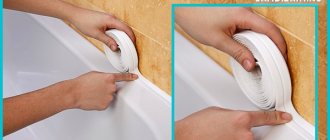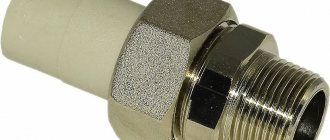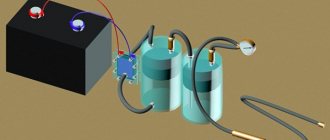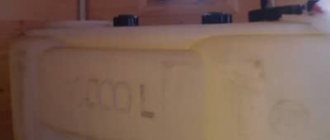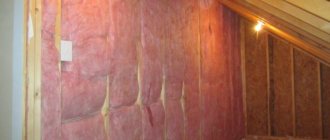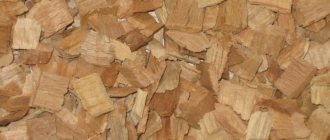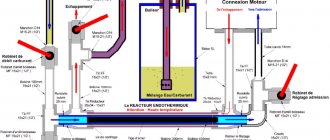Butyl tape is a modern sealing material that is widely used in private and commercial construction. It is available in different sizes and can have a layer of aluminum foil, foil polyethylene foam and even acoustic felt. But one thing remains unchanged: the presence of an adhesive butyl rubber surface, easy to use and environmentally friendly.
Liplent SD - one of the varieties of butyl tape - is intended for sealing external joints of windows and doors
Compound
The basis of the material is a butyl rubber polymer composition, which remains plastic and adhesive in the range from −40 to +100 °C. It can cover the tape on one or both sides, and is protected on top with anti-adhesive paper. Thanks to the properties of butyl rubber, such tapes have high performance characteristics.
Butyl rubber is a synthetic rubber based on isobutylene. The substance is characterized by high heat, cold, light and ozone resistance. Butyl rubber allows air to pass through approximately 20 times less than natural rubber. Resistant to moisture and aggressive environments - solvents, alkalis, acids, alcohols, vegetable and animal fats.
Purpose of bitumen tape for roof repair, installation procedure and tips
During the construction of buildings, one of the stages of work is the installation and arrangement of roof coverings.
In the private sector, to minimize costs, a residential building, as a rule, is finished with more expensive materials, and various outbuildings (summer kitchen, garage, etc.) with cheaper ones. But during operation, various defects appear on the roof for various reasons, and accordingly, the question of its repair arises. And this is where some difficulties arise. Since all roofs are finished differently, the materials must be selected appropriately, “for” a specific roof. In this regard, the best option is to use universal products that are suitable for repairing any type of roofing. Moreover, it is desirable not only for him, but also for other problem areas. In a private home there is always something to repair. An excellent material for solving all of the above problems is bitumen roofing tape.
What it is
This product is a waterproofing self-adhesive fabric, characterized by its low weight, elasticity and sufficient strength. One of the components is bitumen, but modified (with the addition of polymers and rubber). The structure of the bitumen tape is multilayer, and its component (upper) is the thinnest aluminum (sometimes copper) sheet. It is designed to protect the remaining layers from the negative influence of external factors (for example, ultraviolet radiation).
Features of bitumen tape
- High degree of adhesion with almost all building (finishing) materials - concrete, stones, wood, plastic, ceramics, even metal and glass.
- The tape laying technology does not require special skills or any devices (equipment).
- Possibility of using products in a wide temperature range.
- Repair work can be carried out even in cramped conditions when other repair methods are difficult or impossible to implement.
- During the installation process, open fire (for example, a burner), as for many other materials, is not used. This expands the possibilities for repair, since some structural elements can be easily flammable, which means a number of additional (protective) measures will be required.
- Certain types of tape (depending on the case of damage (small cut, puncture).
- A variety of colors allows you to choose a tape to repair any problem area without subsequent painting of the entire surface in order to hide the “patch”.
Scope of application
Let us note all the structural elements of various buildings where bitumen tape can be used as a sealing and waterproofing repair material.
- Roof.
- Foundation (if its parameters are small, complete finishing is possible).
- Drainage system (gutters, drain pipes).
- Chimneys (passage unit).
- Various coverings.
- Openings (windows, doors).
- Septic tanks made of reinforced concrete rings.
- For sealing joints, cracks, crevices and the like.
The procedure for installing the tape
Preparation of the area to be repaired: consists of cleaning the surface to be repaired from dirt and drying it.
Priming: carried out in order to increase the strength of bonding of the tape to the base (special compounds intended specifically for roofing are used). It is advisable to degrease the base first.
The recommended type of primer must be indicated in the installation instructions for the tape.
Preparation of the “patch”: a piece of canvas is cut to the required size, after which the protective layer (film) is removed from one side.
Laying: by pressing onto the base, followed by “rolling” with a roller or something similar. It is necessary to ensure complete removal of air from under the belt/covering and its reliable adhesion to the roofing material.
If it is necessary to cover a large area and several strips are needed, then they are laid with an “overlap” (by 1.5 - 3 cm). For more reliable sealing, you can additionally treat the resulting seams with bitumen sealant. This will give a 100% guarantee of high-quality waterproofing of the surface.
Cost of bitumen tape
As a rule, there are only a few sizes of bitumen tape on sale (unless, of course, it is a fake). Length – 3 or 10 (m), width – from 5 to 45 (cm).
The price, considering the versatility of the product, is quite reasonable. For example, a tape under the Nicoband brand (3 x 0.5 m; weight 250 g) costs approximately 130 - 145 rubles per package (depending on the volume of purchase). The price of products from other manufacturers is approximately the same.
Accordingly, it increases with increasing blade width, and also if a copper sheet is used as a protective layer.
Properties and advantages of butyl tapes
- Butyl tape demonstrates excellent adhesion to metal, wood, concrete, plastic, polycarbonate, glass, brick, ceramic tiles, and ondulin.
- Suitable for smooth and rough surfaces.
- Forms a moisture- and airtight sealing layer.
- Sticks reliably and for a long time: does not lose its adhesive ability even under the influence of mechanical loads (tearing or shear forces).
- Not damaged by contact with precipitation, ultraviolet radiation, or chemicals.
- Thanks to the self-sealing effect, it is not afraid of punctures and cuts.
After installation, butyl tapes retain their performance properties for 10–12 years
What is bitumen-based roofing tape?
This building material is not called universal for nothing: bitumen tapes are used to seal not only the roof, but also pipes, boats and in general everything that needs to be repaired on the farm! Why not? If the entire repair process only takes half an hour!
To the touch, the bitumen tape will remind you of a self-adhesive underlayment, which is usually used when installing soft tiles. But, unlike a carpet, the top layer of the tape is reliably protected from ultraviolet rays and is metallized. The tapes themselves are produced from 5 to 30 cm wide.
The technical characteristics of bitumen tape are practically the same among different manufacturers. After all, the main requirement for it always remains the same: adhesion, durability and reliability. Basically, tapes are single- and double-sided:
Coated or uncoated:
Let's list their main advantages: cost-effectiveness, weather resistance, excellent adhesion and ease of installation. You will probably be interested to know how such a roofing element is made.
During the production process, self-adhesive bitumen-polymer binder is applied to the UV-resistant foil film. It consists of bitumen, a polymer modifier and adhesive additives. This binder is covered with an anti-adhesive polymer film on top to protect the bitumen component from contamination before installation.
Another important point: the use of bitumen tape does not involve the use of fire, which is very important when working at height. There is also a nice bonus: bitumen tapes have a “self-healing” effect, when an accidental puncture heals itself due to the viscosity of the material. Thanks to this, not only will it only take you a few minutes to fix the roofing problem, but in general, even after a couple of years, you will no longer need to remember about such a patch.
Differences between butyl tape and bitumen tape
Butyl tapes are a new generation of sealants that outperform traditional bituminous materials in many respects:
- Durability . Bitumen dries out and becomes brittle within six months to a year after installation, and when heated to 70 °C (for example, on an open roof) it begins to drain. Butyl rubber does not react to temperatures up to 100 °C and retains its original qualities.
- Ease of installation . Butyl tape can be installed perfectly without heating at air temperatures down to −15 °C. It is enough to peel off the anti-adhesive layer and apply the tape with the sticky side. Bituminous materials need to be heated, which requires special skills and tools.
- Environmental friendliness . Unlike bitumen with the “aroma” of petroleum products, butyl rubber is environmentally friendly and does not emit harmful substances or unpleasant odors. It can be used in residential areas, for example to seal joints between windows, doors and walls.
Bitumen-based tape will last much less than butyl tape: within a year or two you will have to repair the joints again
Scope of application
Sealant tape can be used to seal seams and joints of almost any building structures made of homogeneous or dissimilar materials.
With its help they produce:
- junction of roof elements (pitched, flat);
- repair of tiled, seam roofs, metal and PVC gutters, balconies and loggias;
- insulation of assembly seams in the drainage layer made of membrane, polycarbonate;
- arrangement of ventilation systems, cold water pipes;
- protection of seams made of polyurethane foam;
- vibration and sound insulation of rooms, windows;
- sealing the seams between the wall and the plumbing;
- repair of ship transport, railway cars;
- sealing oil pipeline seams.
Where is it used?
Butyl tape is in demand in construction to solve the following problems:
- sealing joints, gaps, joints, perimeters in structures made of different building materials;
- hermetic sealing of seams and cracks;
- sealing of double-glazed windows, door frames, facades;
- repair of roofing, pipeline parts, drains;
- insulation of vehicles and equipment with metal casings, etc.
Butyl tape is indispensable if roofing or gutters need to be repaired.
Areas of use
Bitumen and butyl tapes can be used in many applications where sealing is required. They are especially often used in construction. Outdoors, the tapes can be used to seal facades, walls, roofs and gutters, as well as awnings.
In interior spaces, tapes are used as a repair base for sealing windows, doors, pipes, basements and garages, as well as various surfaces.
Another industry where bitumen and butyl tapes are popular is the automotive industry. Here they are used, among other things, on license plates, when repairing cars or sealing leaks.
Types of butyl tape
Butyl tape differs in the composition of the surfaces, in how much of its area is occupied by the adhesive layer, and in standard sizes. Each variety has its own scope of application. Let's look at some of them.
- Liplent O is a black or beige tape with a double-sided butyl rubber surface , which can be used in difficult cases, for example, when assembling sandwich panels or for insulating culverts. Available in a wide range of lengths (from 6 to 24 m) and widths (from 10 to 1000 mm).
- Liplent Mf is a tape with a one-sided butyl layer , backed with heat-reflecting aluminum foil . It is optimally suited for repairing metal roofs and installing aluminum translucent structures. Standard width is from 40 to 500 mm, custom sizes are possible.
- Liplent Pf - instead of aluminum foil, it contains foil-coated polyethylene foam . The second side is completely covered with butyl rubber. This variety is oil and gasoline resistant, therefore it is used in the automotive industry, for insulating doors, hoods, roofs, and undercarriages, as well as for installing window and door units. The tape can have a thickness of 2, 4 or 8 mm.
- two narrow adhesive butyl strips on one side , for gluing to the frame of the window block and to the lower slope. The tape is intended for external sealing of window drains and balcony doors. Width – from 25 to 450 mm.
- Liplent Mfts - may have a butyl rubber layer on one or both sides. It is made on the basis of aluminum foil or metallized film , reinforced with durable non-woven material. It is used inside when installing window structures, as a hydro- and vapor barrier layer. Roll width – from 40 to 400 mm.
Liplent O (cord) – a narrow tape with a double-sided butyl surface for sealing difficult areas
A wide range of butyl tapes allows you to choose a sealing material to solve a variety of problems. In terms of strength and durability, butyl rubber outperforms the common bitumen. Another obvious advantage is the absence of odor and harmful fumes, which is especially valuable in residential construction.
Cases when seam sealing is indispensable
Some owners, having installed the bathtub as close as possible to the wall, believe that it is not at all necessary to carry out work to seal tiny gaps. This opinion is wrong. Professionals recommend sealing even seams whose width does not reach two millimeters. After all, the resulting gap will become a place where moisture will constantly and unhindered penetrate, which will undoubtedly lead to the growth of mold in the bathroom.
In addition to its unpresentable appearance and unpleasant odor, the fungus can cause serious health problems. These microorganisms aggravate respiratory and heart diseases, including in completely healthy people.
If you do not seal the seam between the bathtub and the wall, sooner or later fungus will appear in this place
Therefore, you should not save on your health. Reliably sealing the joint during repairs is much smarter than the long and grueling process of getting rid of fungal spores. Moreover, the materials intended for these purposes have a very reasonable cost.
The main advantages and disadvantages of bathroom border tape
The border tape is designed to seal the joint between plumbing fixtures and wall finishing materials in the bathroom. This is the most affordable material that can be applied quickly and independently
An important advantage is that the bathroom border tape is quite affordable for the result, which guarantees cleanliness and sealing for some time. Main advantages:
- attractive appearance of the bathroom;
- good camouflage of high-quality joints and seams;
- preventing the formation of mold and fungi;
- use in bathrooms with high humidity levels;
- sealing joints of plumbing products in any room;
- resistance to temperature changes;
- the tape does not wrinkle and withstands loads well;
- resistance to damage and shock;
- has an optimal flexibility/stiffness ratio;
- high plasticity of the tape makes it possible to bend when laying at an angle;
- has sufficient resistance to peeling and delamination after cuts;
- if the installation technology is followed, it guarantees reliable sealing;
- simplest self-installation;
- sufficient plasticity allowing the tape to be laid on curved and rounded joints;
- low cost with high quality product;
- does not deform under loads;
- resistance to chemical reagents when cleaning the bathtub;
- resistance to damage and complete adhesion to slippery surfaces.
But it’s worth mentioning the disadvantages of self-adhesive curb tape for the bathroom:
1. Does not tolerate contact well with acidic silicones and polyurethane foam, which can cause warping
Also, the acidic environment promotes the tape to peel off from the contact surface, which is important to consider when using a flexible border.
2. The relative fragility of the elastic finishing material relative to hard surfaces. For example, porcelain stoneware, plastic or ceramics in border products are designed to last 1-2 decades, the tape is replaced after 1-3 years, depending on the total load during operation.
3. Border tape is a fairly inexpensive and effective means, but it is a temporary finishing material, the warranty period of which covers about a year, after which the used piece is replaced with a new one. But when there is an unused fragment of tape left, then, if properly stored, it can be used after replacing the first fragment.
